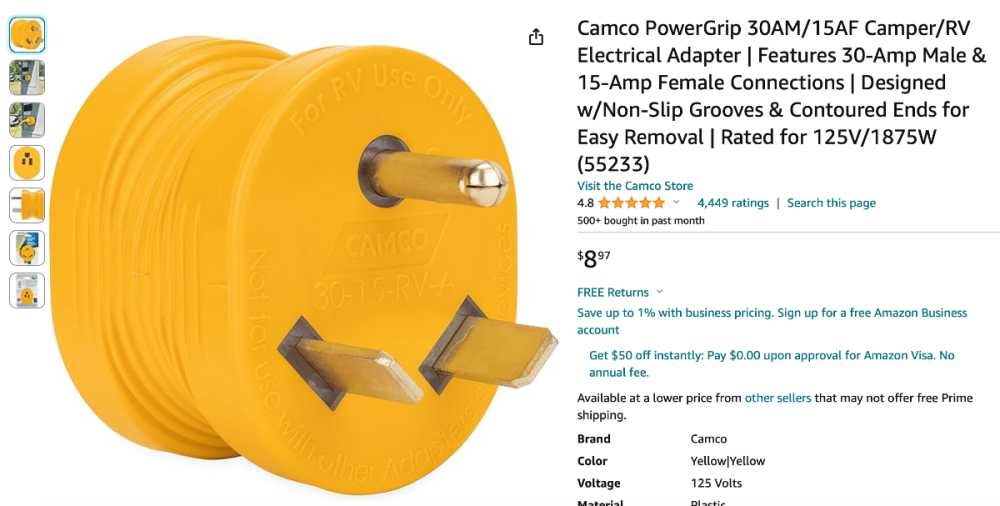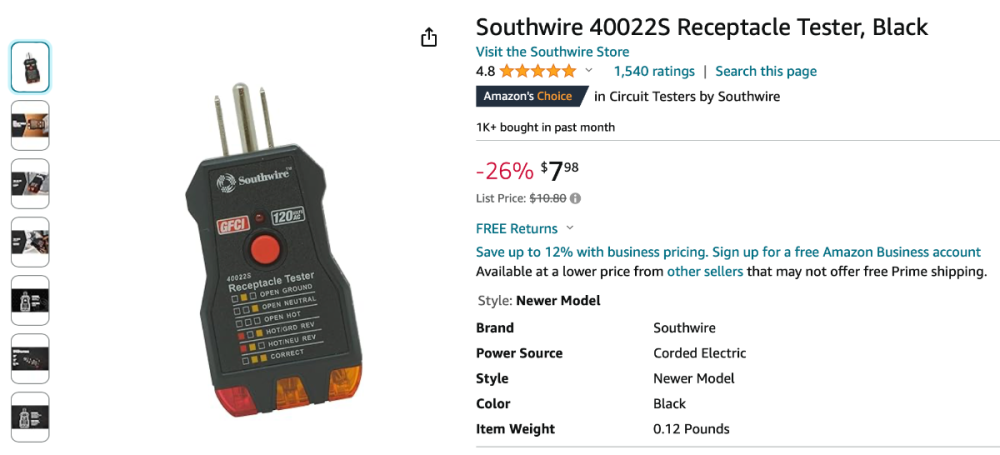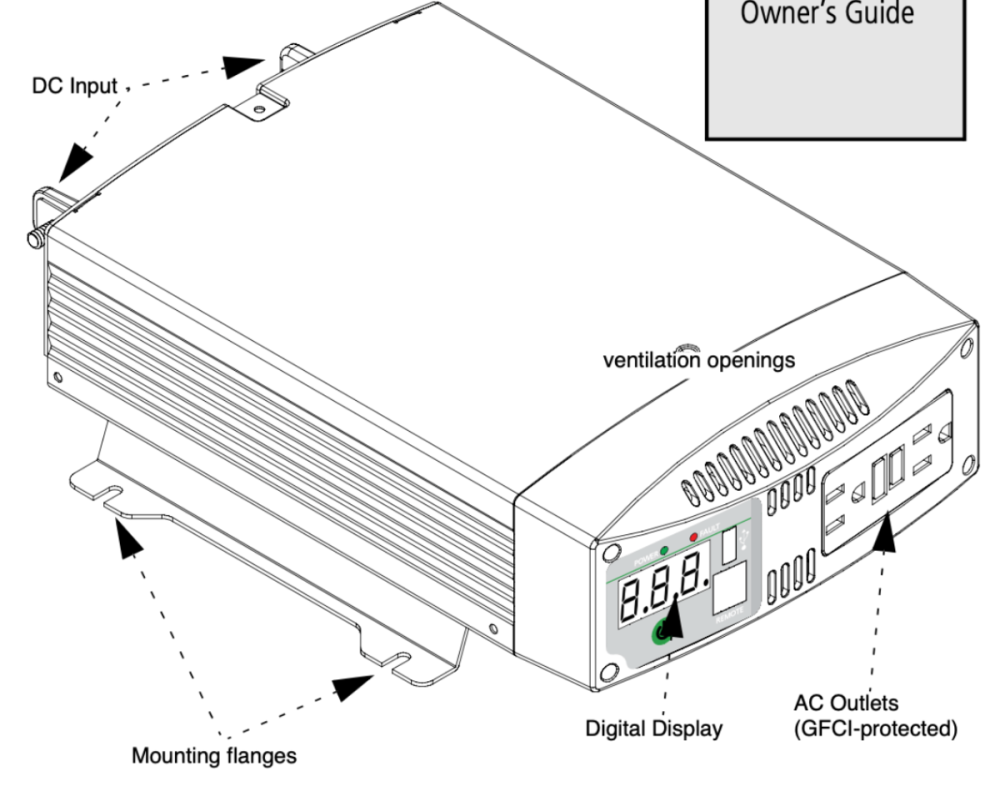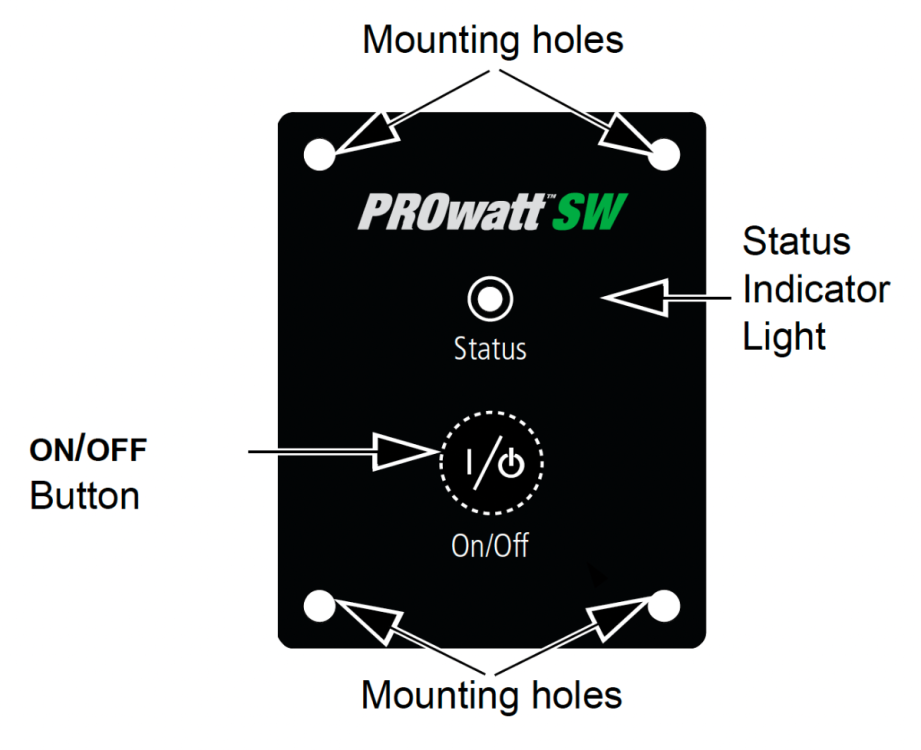-
Posts
122 -
Joined
-
Last visited
-
Days Won
1
Everything posted by MobileJoy
-

Ladybird Johnson RV filling with Oliver’s: Eclipse Update
MobileJoy replied to Galway Girl's topic in Events & Rallies
We're a little behind you down the road at Peach Country RV Park, two Olivers there. -

End of (most) factory service
MobileJoy replied to Steph and Dud B's topic in Mechanical & Technical Tips
Oliver's website now has a Travel Trailers / Find a Dealer page where you enter your address and a search radius. -

Running Norcold Refrigerator on Solar Power Only
MobileJoy replied to The Loonies's topic in Mechanical & Technical Tips
I also have the 390Ah Lithionics and 340w solar system. This week I took Mojo out of storage. Batteries were at 100% because I keep them charged. Since it was time to do a full discharge cycle, I turned on the Norcold fridge on DC mode. The fridge was not pre-cooled, and the temperature inside Mojo was 60 degrees. Solar conditions were not good. The batteries entered LBCO in just under 1 day. In addition, I had the heater running (set at 65 degrees) so the blower was also operating, as was the Xantrex inverter. Not an apples-to-apples comparison with your situation. Usually, I use DC mode only when traveling, and I observe 5-10% drain from fully charged batteries depending on trip duration, outside temperature, and sun exposure. I haven't tried to gauge this accurately. Regarding low battery cutoff, this is done individually as each battery reaches 12.1V. When there is power draw, voltage tends to be lower, so the batteries can cut off before they get down to 10% of charge. In this case, the batteries did cut off at about 13% of charge. -

Newbies taking the plunge - Are we missing anything
MobileJoy replied to Dennis and Melissa's topic in General Discussion
I have a 30A male to 15A female connector along with a home outlet circuit tester. These testers are much cheaper than the 30A tester, and I already had one. This allows me to check proper wiring at the 30A outlet in the pedestal before plugging in the trailer. In theory the inboard EMS does these tests, but why plug in if you already know the pole is incorrectly wired? I do not use an external EMS/protector. -
Congratulations on your purchase, fellow NC'er! I'm sure you will enjoy your Oliver as much as we do ours. Reading the comments above, it looks to me like contributors are thinking that the trailer overloaded the circuit, yet you describe tripping a ground fault circuit interruptor. I have an adapter that converts from the 30A connection to a regular 20A cord. In my driveway, I used this adapter with the proper gauge extension cord many times without a problem. Then one time I came home and hooked it up, and as soon as the energy management system (EMS) cut in the power to the RV the 20A GFCI in my garage tripped. I opened a ticket reporting this ground fault, and the short story is that it was recommended to me that I have a 30A circuit installed. Before I could do that, I removed the GFCI and replaced it with a regular 20A outlet. After that the problem went away and I was able to recharge my batteries with the Xantrex. Note the EMS takes some time to turn the power on to the trailer, so this could have been responsible for the delay you experienced. I never tried changing the #28 setting on the inverter (i.e., 25A to 15A). I don't see what that could have to do with a ground fault (anyone care to explain), but it's worth a try. Ultimately I did install a 30A circuit at home and have not had a problem since. I also have trailer storage with a shared 20A circuit. With multiple bays using it, you have to limit the amount of current that you draw. I use a separate 20A charger that I connect directly to the batteries so the Xantrex is not seeing power.
-
Monitor your power source. You can do this easily by looking at the EMS panel. In our Oliver the panel is in the attic and its readout is in red LEDS. If the voltage drops to around 104V, the EMS will cut off shore power. If the Xantrex is drawing a lot of power (as it will by default when charging your batteries), with an unstable shore power source this could bring down the voltage to the point of EMS shutdown. This removes the power drain and allows the voltage to rise. Once it is sufficient, the EMS cuts back in and eventually powers the Xantrex. The resulting battery charging draw will bring down the voltage, etc., etc. I had this happen to our trailer at a campground that had unstable 30A shore power. Even if your batteries are fully charged, the Xantrex starts off by attempting a full charge and then rapidly changes from Bulk charging to the Absorption stage which draws much less power. You can also reconfigure the Xantrex to charge batteries at a much slower rate so its power draw is not so severe. May help, may not... We have the Lithium Pro package and Xantrex charging is set by default to 150A.
-

elite 2 The wait
MobileJoy replied to Jason Foster's topic in Welcome To The Oliver Travel Trailer Forums
Welcome to the Oliver community! It appears that your intent is to boondocks quite a bit since you are opting for the Lithium batteries. Have you considered the composting toilet? There are many threads on this, but it is one of those things where you either love it or hate it. In our case, it's the former. It expands the time we can spend without sewage hookup allowing us to either boondock or enjoy partial hookup campgrounds. It is more work than a flush toilet, but I feel it's worth it. Airstream was our first choice. We were considering a medium size (25'-27') when I noticed a very small ad in a sidebar of one of the news sites I read for Oliver. That sent us to their website, and almost immediately changed our direction. Our camping goal was to bring home with us as we traveled the country. We have tenting experience but no previous experience with RVs, although I am a homeowner / engineer with some experience in carpentry, electrical, and plumbing so the thought of maintaining a second home didn't bother me. We made the trip to the mother ship for a factory tour. That trip sold my wife on Oliver. She loved the bright interior and decided that living in an OEII would work for her. We had at that point been inside many travel trailers. Thus far, we have done about 16K miles traveling. We have used the service ticket many times. This has been fantastic. The OEII has been pretty reliable. The downsides of it for us are the few things that require frequent maintenance such as the need to lube the chassis every 3,000 miles and to constantly inspect the window tracks to ensure proper drainage. Other things that require maintenance and inspection are done less frequently. Many of these are discussed on this forum (such as checking the torque on bolts that hold the stabilizer jacks in place, servicing wheel bearings, etc.). I can do most of these things myself, but I still do an annual visit to the mother ship for maintenance. Regarding the small size, we are comfortable with this. We can get by each other with no difficulty. Using the wet bath is no problem for us since we are well under 6' tall. We have so far stayed in it up to 9 weeks consecutively and never felt constrained even on rainy days. We did endure a heavy 10 minute hailstorm which dented our truck hood but did no damage at all to the OEII or its solar panels. I'll bet there would have been dents in our Airstream! Otherwise, I can only echo the advice given above. I believe you will love it! The level of service they offer, this Forum, their Facebook page, and the Oliver University are awesome. -
Ah, so the AC from the inverter is physically connected to the ATS. Looking at the manual, the AC output of the ProWatt is a built-in GFCI outlet. So is the connection a grounded plug attached to a Romex cable at the inverter end?
-
Can you tell me how the PROWatt is connected to the AC outlets and accessories? Perhaps a photo? Thanks.
-
I generally agree with this statement. However, if you are storing your OEII, leaving the batteries installed, turning on the heating pads, and connecting an external charger to prevent depletion, then you have to leave the batteries on. In that case, a master cutoff switch would shut down all parasitic draws in the OEII. As Geronimo John pointed out in a different thread, a small propane leak and leaving the tanks turned on during storage could lead to propane pooling and possible ignition, so having the interior devices turned off is an additional safety precaution. If you store by depleting charge to 50% and turning off the batteries then there should be no need for a master switch.
-
Of the two inverters discussed above, I prefer the Freedom series. This one can be programmed for most battery types, and it performs automatic switching to your AC circuitry between inverted power and shore power. It is designed to be wired to your AC system where the PROWatt provides AC outlets instead. In your case, there must already be a battery charger in your trailer. Many contributors on the Forum have said that they don't like the combined inverter/charger (Xantrex Freedom) and would have preferred these to be separate to eliminate a single point of failure. You can probably find an inverter that can be wired into your AC system and that does not charge the batteries. Unless your previous owner upgraded, based on your model year you do not have LiFeBlue or Lithionics batteries. I think Oliver started offering Lithium batteries in 2020. A quick look will tell you what you have. If you have the standard lead-acid batteries, an inverter won't provide significant power for very long. You should choose the inverter based on your upgrade intentions. If you are going to install LiFePO4 batteries (many on the Forum have installed BattleBorn) then get a 3000 watt model, otherwise a 2000 watt model is sufficient. Your AC may or may not have the soft-start capacitor which may be necessary when running on inverted power. I agree. Figure out what you want and then open a ticket with your questions.
-
In case you don't have the PROWatt, the Freedom inverter looks like this. Note it has a control panel. This is a large box that will likely be mounted under the street side bed near the pantry.
-
-
Oliver University. It is from the 2018 Xantrex PROwatt 2000 Inverter Remote Manual.
-
If you don't see the Freedom panel, see if there is a PROWatt panel like this one. I got this from the 2018 model. I couldn't identify the one used for 2019 specifically.
-
I keep an external charger on hand for such situations and for winter storage. The one I use is a 20A charger that I purchased directly from Lithionics. It was $200 + shipping. There are less expensive ones out there as well. To purchase from them, it was necessary to contact them. There is a Product Inquiry link in the web page I provided here. There are less expensive options out there as well.
-
One other thing you might try is to charge the batteries slower. Setting 24 allows you to change the charger current. By default it is set to 150A. When I had poor 30A shore power at a campsite (low voltage), I changed this value to 25A, and it allowed the AC to operate for a while before the input voltage level fell to the point where the EMS rejected the input power source. Ultimately we wound up changing campsites. The setting can be adjusted in 5A increments between 5A and 150A.
-
Same here. I ordered a complete replacement set of the touch lights. Due to some order confusion, I got a call from Ryder. He told me they were working on replacing the touch lights and that the replacements (each of which would have its own switch) would be slightly larger than the touch lights, so a retrofit might be possible without old holes needing to be patched. He also said it was not definite but likely. I canceled my order and am waiting until I go to the mother ship for my next service in April. I learned the 2024’s will not have touch lights they will have lights that use an on off switch to operate the light per OTT service. Just curious John, where you got this info.
-
The Truma Aventa (13.5K BTU) definitely cools better than the Dometic Penguin (11K BTU). Having done the upgrade I have experienced both. The Truma lowers temperature much more rapidly and maintains it easily. Because of the higher BTUs, it does not run as long, leading to somewhat higher humidity. There is a Dehumidify Mode that will drastically lower the humidity (and temperature). It works very well. The Penguin ran longer, but humidity could still get pretty high under some circumstances. Both machines use Oliver's internal condensate drain plumbing. The downside of the Truma is its price. Carleton, if you're going new, I suggest ordering the Truma package. It will cost less than upgrading the AC post sale, plus you get Truma's on-demand water heater (AquaGo). Both the Dometic FreshJet and the Houghton RecPro cost considerably less, but Oliver will not install them at this time. The big reason to go with something other than the Penguin is reducing noise. It is quite loud.
-
I also agree with the points made above. However, in my case when the trailer was being towed home from delivery by Oliver, I checked the torque on all nuts. My wrench slipped on one of them and that was enough to deform the skin. I was unable to get the wrench back on that nut while on that trip. To get it off, a socket had to be hammered onto the nut. At the time that this happened, I didn't realize the nut had a skin and thought the nut itself was deformed. I figured it out when I got home and decided right then to replace the nuts.
-
Sorry, I did not mean to turn this into a discussion about batteries. I only mentioned the storage procedure I use (recommended by Lithionics) to indicate that I do have electrical switching going on in the battery compartment. Without an added battery box circulating fan, I do not see any leaking propane finding its way in there. With the tanks shut off, I do not see small propane leaks as a storage issue. I do understand your points about unique circumstances leading to lower explosive limits being reached. For us, we do not provide unsupervised access to our trailer to anyone else, we religiously make sure the tanks are off when in storage, there is no available shore power at our storage location, and I don't think we have a master DC cut-off. The Lithionics batteries can be turned off, but then they would have to be removed for cold weather. I will look into adding a master DC cutoff switch. This would kill all power to the trailer while allowing me to leave the batteries and heating pads turned on. GJ, a big thanks for this advice!
-
For long term storage I follow the Lithionics battery maintenance procedure for 130Ah batteries. The choice I use is to leave the batteries on, turn on the heating pads, and connect an external (Lithionics) charger to the batteries. The shore power inlet remains disconnected. All major appliances, the solar panels, and the Xantrex are turned off but there are still some parasitic draws like smoke alarms that I do not stop. Although 20 miles away from home I visit Mojo at least once a month and usually more often. As part of my departure checklist I always make sure the propane cylinders are turned off (two pairs of eyes are on this), and I recheck the valves with each visit. The Mojo is stored in an enclosed unheated unit with a garage door. Although I do not currently do this, I could turn off the master 12V switch if there is one, but this would not prevent some electrical switching in the battery compartment. The batteries remain on for maintaining charge. Given that the tanks are off, propane leaks while in storage haven't concerned me until now. To properly maintain the batteries without a charger, they have to be removed if they would otherwise be exposed to freezing temperatures. Since we do have occasional freezing periods here, I purchased the charger so I could use the heating pads, preventing the batteries from freezing. So, GJ, given the storage procedure I use, is there anything else you can think of that I could do to increase propane safety?
-
This might be correct. Whether it is or not, I recommend using the type of nuts that came with your OEII. In my case, bulge acorn is the type of nut that was delivered with my 2021 OEII. These are the nuts I used. They are chrome plated steel, not stainless. So far they are working well. Torque has been checked many times, and no loosening noted.
-
The Hario pour-over is ceramic and the beaker is glass. I also use a pre-heated ceramic coffee cup, no plastic.








